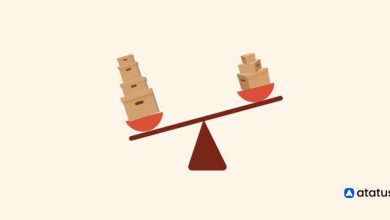The Role of Central Banks in Quantitative Easing

The Role of Central Banks in Quantitative Easing
Understanding Quantitative Easing
What is Quantitative Easing?
Quantitative Easing, commonly known as QE, is an extraordinary monetary policy tool used by central banks to stimulate the economy when traditional monetary policies, such as interest rate cuts, are ineffective. It involves the purchase of government securities and other financial assets to inject money into the economy, aiming to encourage lending and boost economic activity.
How Does Quantitative Easing Work?
When a central bank decides to implement quantitative easing, it starts by purchasing government bonds and sometimes other assets, such as mortgage-backed securities or corporate bonds, from banks and other financial institutions. By doing so, the central bank increases the amount of money in circulation and adds liquidity to the financial system.
The Role of Central Banks
Central banks play a crucial role in implementing and managing quantitative easing. Their primary objective is to stabilize the economy by influencing interest rates, money supply, and inflation. By conducting open market operations, central banks can effectively control the amount of money in circulation and steer the economy towards growth.
The Goals of Quantitative Easing
Stimulating Economic Growth
One of the main goals of quantitative easing is to stimulate economic growth. By injecting funds into the economy, central banks aim to lower interest rates, making it cheaper for individuals and businesses to borrow money. This, in turn, encourages spending and investment, driving economic activity.
Boosting Inflation
Another objective of quantitative easing is to increase inflation. During times of economic downturn, deflationary pressures can hinder economic recovery. By increasing the money supply, central banks aim to push inflation rates towards their target levels, as a moderate and controlled level of inflation is considered beneficial for the economy.
Tackling Financial Crises
Quantitative easing can also be used as a response to financial crises. During times of severe economic stress, central banks may implement this policy tool to provide liquidity to banks and stabilize financial markets. By purchasing troubled assets from financial institutions, central banks help alleviate the pressure on the banking system and restore confidence.
FAQs
1. Does quantitative easing lead to inflation?
Quantitative easing can potentially lead to inflation if the increased money supply is not balanced by sustainable economic growth. However, central banks closely monitor and manage the process to minimize inflation risks.
2. How long does quantitative easing last?
The duration of quantitative easing programs varies depending on economic conditions and objectives. Central banks typically review and adjust the policies periodically based on the state of the economy.
3. Are there any risks associated with quantitative easing?
While quantitative easing can provide short-term benefits, it carries some risks. Excessive money supply growth can lead to inflation, and the withdrawal of quantitative easing measures may pose challenges in maintaining economic stability.
In conclusion, quantitative easing is a powerful tool that central banks use to stimulate economic growth, boost inflation, and tackle financial crises. Through this policy, central banks can effectively manage the money supply, interest rates, and financial market liquidity, ultimately playing a critical role in supporting the overall health and stability of the economy.



